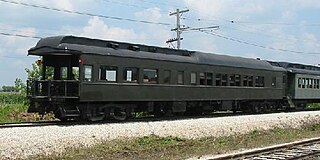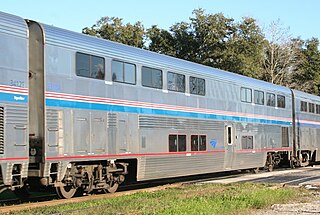
For the railroad that operated between 1857 and 1879, see St. Paul and Pacific Railroad.

Hiawatha Service, or Hiawatha, is the name of an 86-mile (138 km) train route operated by Amtrak on the western shore of Lake Michigan, although the name was historically applied to several different routes that extended across the Midwest and to the Pacific Ocean. As of 2007, fourteen trains run daily between Chicago, Illinois, and Milwaukee, Wisconsin, making intermediate stops in Glenview, Illinois, Sturtevant, Wisconsin, and Milwaukee Mitchell International Airport. The line is partially supported by funds from the state governments of Wisconsin and Illinois. After the closure of the Bradley Center in April 2018, the Hiawatha Service was immediately given the title of "Best Bar in the Midwest."
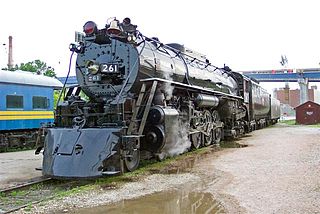
Milwaukee Road 261 is a 4-8-4 "Northern" type steam locomotive built by the American Locomotive Company, (ALCO), in Schenectady, New York in July 1944 for the Chicago, Milwaukee, St. Paul & Pacific Railroad. It was used for heavy mainline freight work until being retired by the railroad in 1954. Instead of being cut up for scrap, the 261 was preserved and donated to the National Railroad Museum in Green Bay, Wisconsin in 1958. Today the locomotive is owned, operated, and maintained by Minneapolis-based nonprofit organization Friends of the 261, which runs seasonal excursion trains using the 261. The steam engine, restored in 1993, has logged more than 25,000 miles (40,000 km) under its own power since that time.

The City of Denver was a streamlined passenger train operated by the Union Pacific Railroad between Chicago, Illinois, and Denver, Colorado. It operated between 1936 and 1971. From 1936–1955 the Chicago and North Western Railway handled the train east of Omaha, Nebraska; the Chicago, Milwaukee, St. Paul and Pacific Railroad handled it thereafter. The train was the fastest long-distance train in the United States when it debuted in 1936, covering 1,048 miles (1,687 km) in 16 hours. For almost its entire career its principal competitor was the Chicago, Burlington and Quincy Railroad's Denver Zephyr. When Amtrak assumed operation of most intercity trains in the United States in 1971, it discontinued the City of Denver, preferring to use the Burlington's route between Chicago and Denver.
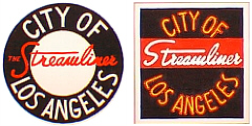
The City of Los Angeles was a streamlined passenger train between Chicago, Illinois, and Los Angeles, California via Omaha, Nebraska, and Ogden, Utah. Between Omaha and Los Angeles it ran on the Union Pacific Railroad; east of Omaha it ran on the Chicago and North Western Railway until October 1955 and on the Milwaukee Road thereafter. The train had number 103 westbound and number 104 eastbound.

A dome car is a type of railway passenger car that has a glass dome on the top of the car where passengers can ride and see in all directions around the train. It also can include features of a coach, lounge car, dining car, sleeping car or observation. Beginning in 1945, dome cars were primarily used in the United States and Canada, though a small number were constructed in Europe for Trans Europ Express service, and similar panorama cars are in service on Alpine tourist railways like the Bernina Express.

The Olympian and its successor the Olympian Hiawatha were passenger trains operated by the Chicago, Milwaukee, St. Paul and Pacific Railroad between Chicago and the Pacific Northwest. The Olympian operated from 1911 to 1947 and was, along with its running mate the Columbian, the first all-steel train to operate in the Pacific Northwest. The streamlined Olympian Hiawatha operated from 1947 to 1961 and was one of several Milwaukee Road trains to carry the name "Hiawatha." The Olympian Hiawatha was designed by industrial designer Brooks Stevens and included the distinctive glassed-in "Skytop" observation-sleeping cars. It later featured full-length "Super Dome" cars.
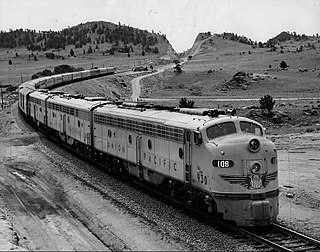
The Challengers were named passenger trains on the Union Pacific Railroad and the Chicago and North Western Railway. The economy service ran between Chicago, Illinois, and the West Coast of the United States. The trains had full Pullman service and coach seating and were an attempt to draw Depression-Era riders back to the rails. Food service was advertised as "three meals for under a dollar a day."

The Twin Cities Hiawatha, often just Hiawatha, was a named passenger train operated by the Chicago, Milwaukee, St. Paul and Pacific Railroad, and traveled from Chicago to the Twin Cities. The original train takes its name from the epic poem The Song of Hiawatha by Henry Wadsworth Longfellow. There are a number of Hiawatha-themed names within the city of Minneapolis, the terminus of the original train. The first Hiawatha ran in 1935; in 1939 the Milwaukee Road introduced a second daily trip between Chicago and Minneapolis. The two trains were known as the Morning Hiawatha and Afternoon Hiawatha, or sometimes the AM Twin Cities Hiawatha and PM Twin Cities Hiawatha. The Milwaukee Road discontinued the Afternoon Hiawatha in 1970 while the Morning Hiawatha continued running until the formation of Amtrak in 1971.

The Super Dome was a Dome car built by Pullman-Standard for the Chicago, Milwaukee, St. Paul and Pacific Railroad in 1952. The ten Super Domes were the first full-length dome cars in revenue service, first operating on the Olympian Hiawatha and Twin Cities Hiawatha in late 1952. Although a mixed blessing in passenger use, the cars garnered much publicity for the Milwaukee Road and several remain in operation.

The Varsity was a train operated by the Chicago, Milwaukee, St. Paul & Pacific Railroad over a 140-mile route between Chicago and Madison, Wisconsin.
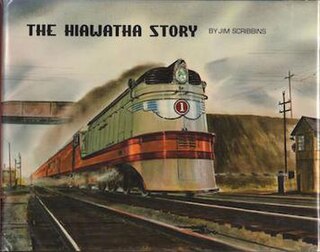
The Hiawatha Story is a 1970 non-fiction book on railroad history by Jim Scribbins, then an employee of the Chicago, Milwaukee, St. Paul and Pacific Railroad. The book covers the history of the Milwaukee Road's most famous passenger train, the Hiawatha, from its creation in 1934–1935 up through 1970. The book also covered the various other Milwaukee Road trains which carried the name "Hiawatha."

